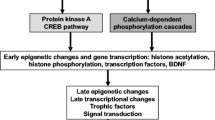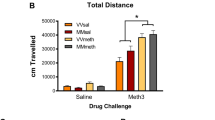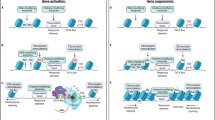Abstract
Rationale
The molecular mechanisms underlying susceptibility to psychostimulant addiction remain unclear. Searching for commonalities in the effects of addictive drugs on brain gene expression is a prolific approach to determine transcriptional signatures influencing drug abuse.
Objective
We explored the common transcriptional responses to the reinforcing effects of psychostimulants methamphetamine, amphetamine, and methylphenidate. We also aimed to identify transcriptional changes that may subserve abuse of these drugs.
Methods
Genome-wide transcriptome profiling analyses were performed to identify common prefrontal cortical (PFC) and striatal gene expression profiles in drug-naïve (cohort 1) and stimulant-pretreated (cohort 2) rats, which showed a conditioned place preference to and self-administration of methamphetamine, amphetamine, and methylphenidate.
Results
In behavioral studies, stimulant-pretreated rats showed behavioral sensitization characterized by enhanced behavioral response to the rewarding or reinforcing effects of psychostimulants. Inflammation-associated genes (e.g., Alas1, S100a8 and S100a9) were identified as the primary differentially expressed genes (DEGs) in both the PFC and the striatum of cohort 1 rats, while neuronal plasticity (Sgk1)- and brain development (e.g., Bhlhe22, Neurod1, Nr4a2, and Msx1)-associated genes comprised the major upregulated DEGs in the striatum of cohort 2 rats. Furthermore, a meta-analysis of the common striatal DEGs in this study along with morphine-regulated striatal transcriptomes in mice (National Center for Biotechnology Information-Gene Expression Omnibus Database Accession Code GSE7762) suggested similar expression profiles of genes involved in neuronal development (e.g., Bhlhe22, Nr4a2).
Conclusion
This study provides evidence that brain development-associated genes mediate the reinforcing effects of methamphetamine, amphetamine, and methylphenidate and that these transcripts may underlie susceptibility to psychostimulant addiction.





Similar content being viewed by others
References
Adler MW, Rogers TJ (2005) Are chemokines the third major system in the brain? J Leukoc Biol 78(6):1204–1209
Albertson TE, Derlet RW, Van Hoozen BE (1999) Methamphetamine and the expanding complications of amphetamines. West J Med 170:214–219
Ang SL (2006) Transcriptional control of midbrain dopaminergic neuron development. Development 133:3499–3506
Baldwin HA, Colado MI, Murray TK, De Souza RJ, Green AR (1993) Striatal dopamine release in vivo following neurotoxic doses of methamphetamine and effect of the neuroprotective drugs, chlormethiazole and dizocilpine. Br J Pharmacol 108:590–596
Beckman DA, Schneider M, Youreneff M, Tse FF (2008) Juvenile toxicity assessment of d,l-methylphenidate in rats. Birth Defects Res B Dev Reprod Toxicol 83(1):48–67
Berman SM, Kuczenski R, McCracken JT, London ED (2009) Potential adverse effects of amphetamine treatment on brain and behavior: a review. Mol Psychiatry 14(2):123–142
Cadet JL (2009) Amphetamine recapitulates developmental programs in the zebrafish. Genome Biol 10:231
Childress AR, McElgin W, Mozley PD, O'Brien CP (1999) Limbic activation during cue-induced craving for cocaine and for natural rewards. Biol Psychiatry 45:170
Clark KH, Wiley CA, Bradberry CW (2013) Psychostimulant abuse and neuroinflammation: emerging evidence of their interconnection. Neurotox Res 23(2):174–188
Compton WM, Volkow ND (2006) Abuse of prescription drugs and the risk of addiction. Drug Alcohol Depend 83(Suppl 1):S4–S7
dela Peña I, Lee JC, Lee HL, Woo TS, Lee HC, Sohn AR, Cheong JH (2012a) Differential behavioral responses of the spontaneously hypertensive rat to methylphenidate and methamphetamine: lack of a rewarding effect of repeated methylphenidate treatment. Neurosci Lett 514(2):189–193
dela Peña I, Yoon SY, Lee JC, dela Peña JB, Sohn AR, Ryu JH, Shin CY, Cheong JH (2012b) Methylphenidate treatment in the spontaneously hypertensive rat: influence on methylphenidate self-administration and reinstatement in comparison with Wistar rats. Psychopharmacology (Berlin) 221(2):217–226
Filloux F, Townsend JJ (1993) Pre- and postsynaptic neurotoxic effects of dopamine demonstrated by intrastriatal injection. Exp Neurol 119:79–88
Flames N, Hobert O (2011) Transcriptional control of the terminal fate of monoaminergic neurons. Annual Rev Neurosci 34:153–184
Folds Mathes W, Nehrenberg DL, Gordon R, Hua K, Garland J, Pomp D (2010) Dopaminergic dysregulation in mice selectively bred for excessive exercise of obesity. Behav Brain Res 210(2):155–163
Freeman WM, Lull ME, Patel KM, Brucklacher RM, Morgan D et al (2010) Gene expression changes in the medial prefrontal cortex and nucleus accumbens following abstinence from cocaine self-administration. BMC Neurosci 11:29
Gerdeman GL, Partridge JG, Lupica CR, Lovinger DM (2003) It could be habit forming: drugs of abuse and striatal synaptic plasticity. Trends Neurosci 26:184–192
Greco D, Volpicelli F, Di Lieto A, Leo D, Perrone-Capano C (2009) Comparison of gene expression profile in embryonic mesencephalon and neuronal primary cultures. PLoSOne 4(3):e4977
Jacobs EH, Smit AB, de Vries TJ, Schoffelmeer AN (2003) Neuroadaptive effects of active versus passive drug administration in addiction research. Trends Pharmacol Sci 24(11):566–573
Jones JR, Caul WF (1992) Effects of amphetamine on food intake and weight: timing of injections and food access. Physiol Behav 52(3):515–520
Joshi PS, Molyneaux BJ, Feng L, Xie X, Macklis JD, Gan L (2008) Bhlhb5 regulates the postmitotic acquisition of area identities in layers II–V of the developing neocortex. Neuron 60(2):258–272
Kadkhodaei B, Ito T, Joodmardi E, Mattson B, Rouillard C et al (2009) Nurr1 is required for maintenance of maturing and adult midbrain dopamine neurons. J Neurosci 29:15923–15932
Kalivas PW (2005) How do we determine which drug-induced neuroplastic changes are important? Nat Neurosci 8(11):1440–1441
Kelley AE (2004) Memory and addiction: shared neural circuitry and molecular mechanisms. Neuron 44:161–179
Kest B, Palmese CA, Hopkins E, Adler M, Juni A, Mogil JS (2002) Naloxone-precipitated withdrawal jumping in 11 inbred mouse strains: evidence for common genetic mechanisms in acute and chronic morphine physical dependence. Neuroscience 115:463–469
Koob GF (2008) A role for brain stress systems in addiction. Neuron 59(1):11–34
Koob GF, Volkow ND (2010) Neurocircuitry of addiction. Neuropsychopharmacology 35:217–238
Korostynski M, Piechota M, Kaminska D, Solecki W, Przewlocki R (2007) Morphine effects on striatal transcriptome in mice. Genome Biol 8:R128
Krasnova IN, Li SM, Wood WH, McCoy MT, Prabhu VV, Becker KG, Katz JL, Cadet JL (2008) Transcriptional responses to reinforcing effects of cocaine in the rat hippocampus and cortex. Genes Brain Behav 7(2):193–202
Krasnova IN, Justinova Z, Ladenheim B, Jayanthi S, McCoy MT et al (2010) Methamphetamine self-administration is associated with persistent biochemical alterations in striatal and cortical dopaminergic terminals in the rat. PLoS One 5:e8790
Krasnova IN, Ladenheim B, Hodges AB, Volkow ND, Cadet JL (2011) Chronic methamphetamine administration causes differential regulation of transcription factors in the rat midbrain. PloS One 6(4):e19179
Livak KJ, Schmittgen TD (2001) Analysis of relative gene expression data using real-time quantitative PCR and the 2(−Delta Delta C(T)) method. Methods 25(4):402–408
Loftis J (2011) Methamphetamine causes persistent immune dysregulation: a cross-species, translational report. Neurotox Res 20(1):59–68
Lull ME, Freeman WM, Vrana KE, Mash DC (2008) Correlating human and animal studies of cocaine abuse and gene expression. Ann N Y Acad Sci 1141:58–75
Mariotti KC, Rossato LG, Froehlich PE, Limberger RP (2013) Amphetamine-type medicines: a review of pharmacokinetics, pharmacodynamics and toxicological aspects. Curr Clin Pharmacol (in press)
Martinat C, Bacci JJ, Leete T, Kim J, Vanti WB et al (2006) Cooperative transcription activation by Nurr1 and Pitx3 induces embryonic stem cell maturation to the midbrain dopamine neuron phenotype. Proc Natl Acad Sci USA 103:2874–2879
Muñoz EM, Bailey MJ, Rath MF, Shi Q, Morin F, Coon SL, Møller M, Klein DC (2007) NeuroD1: developmental expression and regulated genes in the rodent pineal gland. J Neurochem 102(3):887–899
Nacken W, Roth J, Sorg C, Kerkhoff C (2003) S100A9/S100A8: myeloid representatives of the S100 protein family as prominent players in innate immunity. Microsc Res Tech 60(6):569–580
Paxinos G, Watson C (1996) The rat brain in stereotaxic coordinates. Academic, New York
Piechota M, Korostynski M, Solecki W, Gieryk A, Slezak M, Bilecki W, Ziolkowska B et al (2010) The dissection of transcriptional modules regulated by various drugs of abuse in the mouse striatum. Genome Biol 11:R48
Piechota M, Korostynski M, Sikora M, Golda S, Dzbek J (2012) Common transcriptional effects in the mouse sttiatum following chronic treatment with heroin and methamphetamine. Genes Brain Behav 11:404–414
Renthal W, Kumar A, Xiao G, Wilkinson M, Covington HE 3rd, Maze I, Sikder D, Robison AJ, LaPlant Q, Dietz DM, Russo SJ, Vialou V, Chakravarty S, Kodadek TJ, Stack A, Kabbaj M, Nestler EJ (2009) Genome-wide analysis of chromatin regulation by cocaine reveals a role for sirtuins. Neuron 62:335–348
Rhodes JS, Crabbe JC (2005) Gene expression induced by drugs of abuse. Curr Opin Pharmacol 5(1):26–33
Robinson TE, Berridge KC (1993) The neural basis of drug craving: an incentive-sensitization theory of addiction. Brain Res Rev 18:247–291
Robison AJ, Nestler EJ (2011) Transcriptional and epigenetic mechanisms of addiction. Nat Rev 12:623–637
Sadasivan S, Pond BB, Pani AK, Qu C, Jiao Y, Smeyne RJ (2012) Methylphenidate exposure induces dopamine neuron loss and activation of microglia in the basal ganglia of mice. Plos One 7(3):333693
Sagvolden T (2000) Behavioral validation of the spontaneously hypertensive rat (SHR) as an animal model of attention-deficit/hyperactivity disorder (AD/HD). Neurosci Biobehav Rev 24:31–39
Tande D, Hoglinger G, Debeir T, Freundlieb N, Hirsch E, Francois C (2006) New striatal dopamine neurons in MPTP-treated macaques result from a phenotypic shift and not neurogenesis. Brain 129:1194–1200
Thomas DM, Walker PD, Benjamins JA, Geddes TJ, Kuhn DM (2004) Methamphetamine neurotoxicity in dopamine nerve endings of the striatum is associated with microglial activation. J Pharmacol Exp Ther 311(1):1–7
Todd RD (1992) Neural development is regulated by classical neurotransmitters: dopamine D2 receptor stimulation enhances neurite outgrowth. Biol Psychiatry 31:794–807
Tripodi M, Filosa A, Armentano M, Studer M (2004) The COUP-TF nuclear receptors regulate cell migration in the mammalian basal forebrain. Development 131(24):6119–6129
Valjent E, Pages C, Herve D, Girault JA, Caboche J (2004) Addictive and non-addictive drugs induce distinct and specific patterns of ERK activation in mouse brain. Eur J Neurosci 19:1826–1836
Volkow ND, Swanson JM (2003) Variables that affect the clinical use and abuse of methylphenidate in the treatment of ADHD. Am J Psychiatry 160(11):1909–1918
Webb K, Norton W, Trümbach D, Meijer AH, Ninkovic J, Topp S, Heck H et al (2009) Zebrafish reward mutants reveal novel transcripts mediating the behavioral effects of amphetamine. Genome Biol 10(7):R81
Werme M, Hermanson E, Carmine A, Buervenich S, Zetterstrom RH, Thoren P, Ogren SO, Olson L, Perlmann T, Brene S (2003) Decreased ethanol preference and wheel running in Nurr1-deficient mice. Eur J Neurosci 17:2418–2424
Whitney NP, Eidem TM, Peng H, Huang YL, Zheng JC (2009) Inflammation mediates varying effects in neurogenesis: relevance to the pathogenesis of brain injusry and neurodegenerative disorders. J Neurochem 108(6):1343–1359
Wise RA (2002) Brain reward circuitry: insights from unsensed incentives. Neuron 36:229–240
Yuferov V, Nielsen D, Butelman E, Kreek MJ (2005) Microarray studies of psychostimulant-induced changes in gene expression. Addict Biol 10(1):101–118
Yui S, Nakatani Y Mikami (2003) Calprotectin (S100a8/S100a9), an inflammatory protein complex from neutrophils with a broad apoptosis-inducing activity. Biol Pharm Bull 26(6):753–760
Zhang F, Shen G, Liu XL, Wang F, Zhao HL, Yu J, Zhang JW (2011) Hypoxic induction of human erythroid-specific δ-aminolevulinate synthase mediated by hypoxia-inducible factor 1. Biochemistry 50(7):1194–1202
Zhou FC, Zhao Q, Liu Y, Goodlett CR, Liang T, McClintick JN, Edenberg HJ, Li L (2011) Alteration of gene expression by alcohol exposure at early neurulation. BMC Genomics 12:124
Acknowledgments
This work was supported by the Korean Food and Drug Administration (grant number 11182 Ui An Yu 602) and the Korea Healthcare Technology Research and Development Project, Ministry for Health and Welfare Affairs, Republic of Korea (grant number A120013).
Conflict of interest
The authors declare no conflict of interest.
Author information
Authors and Affiliations
Corresponding authors
Electronic supplementary material
Below is the link to the electronic supplementary material.
ESM 1
(JPEG 72 kb)
Rights and permissions
About this article
Cite this article
dela Peña, I., Jeon, S.J., Lee, E. et al. Neuronal development genes are key elements mediating the reinforcing effects of methamphetamine, amphetamine, and methylphenidate. Psychopharmacology 230, 399–413 (2013). https://doi.org/10.1007/s00213-013-3168-8
Received:
Accepted:
Published:
Issue Date:
DOI: https://doi.org/10.1007/s00213-013-3168-8




